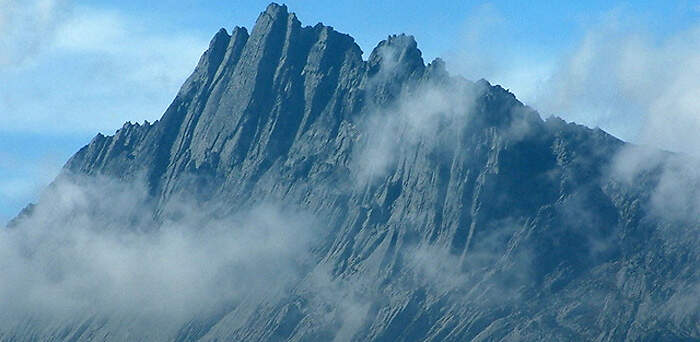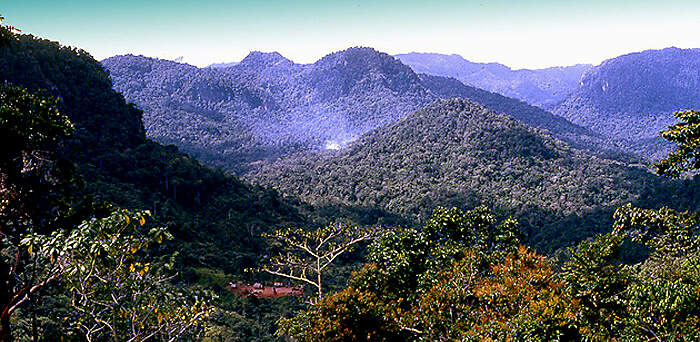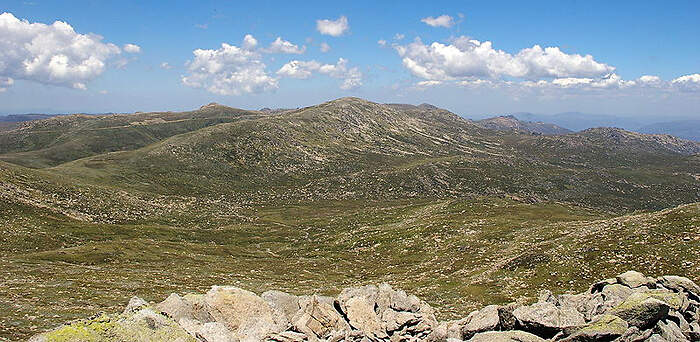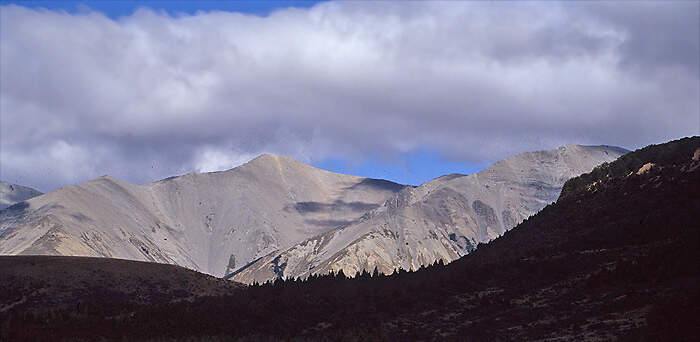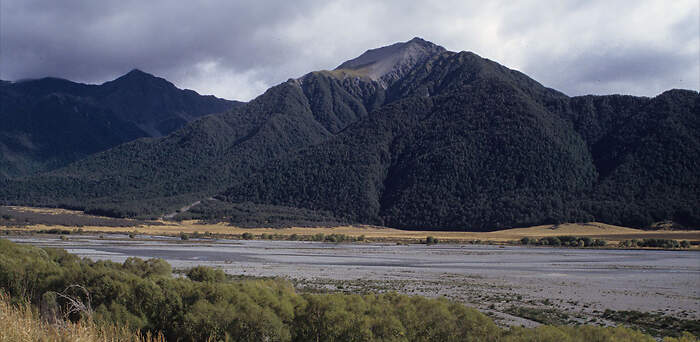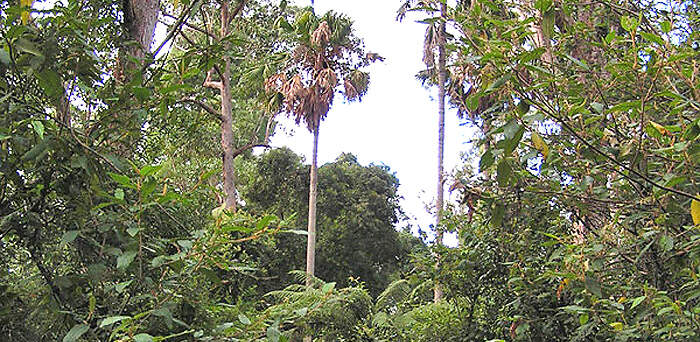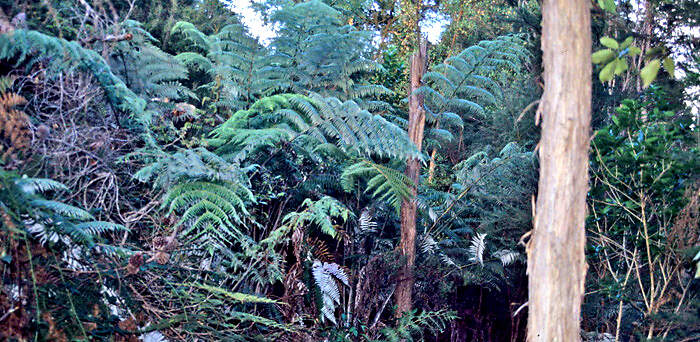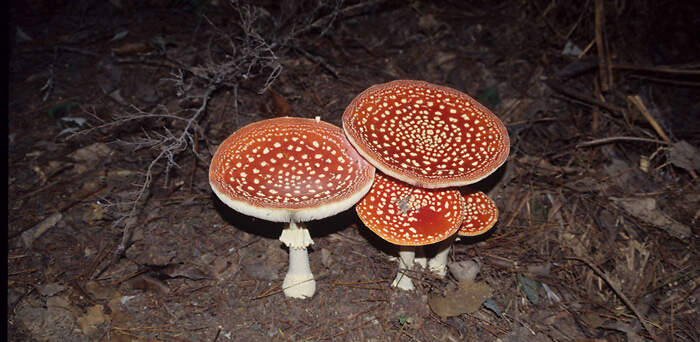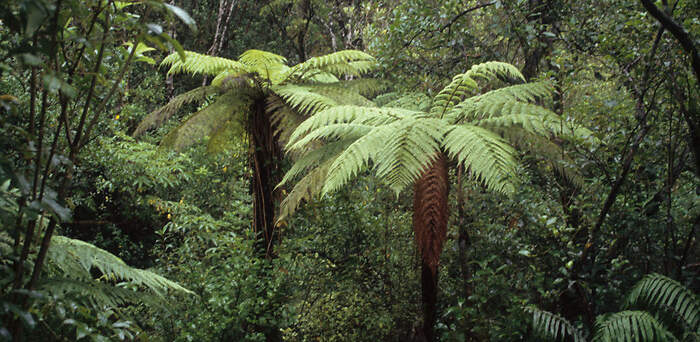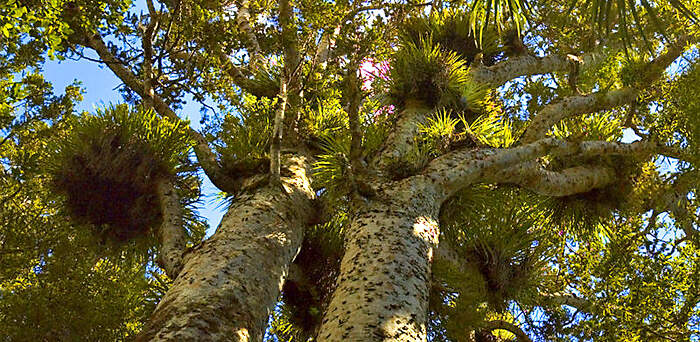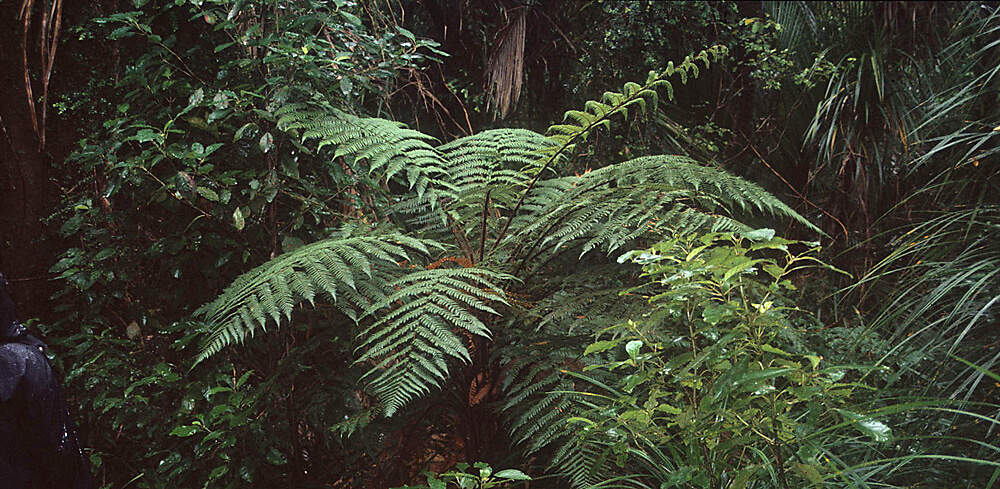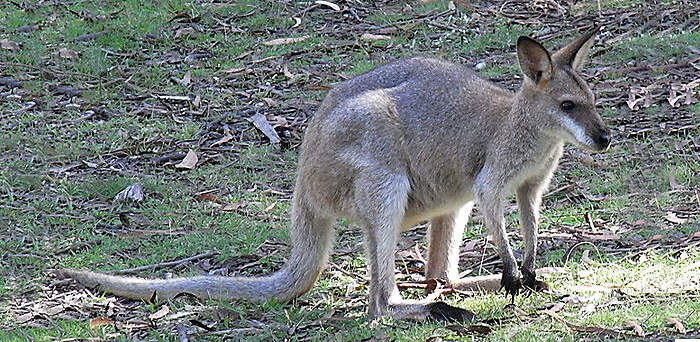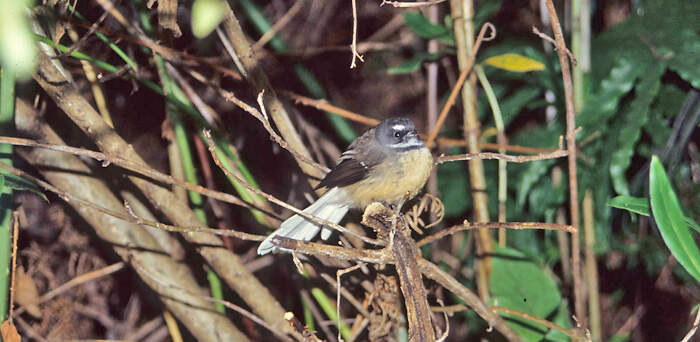RAMSTAD, K.M., NELSON, N.J. et al. (2007)
RAMSTAD, K.M., NELSON, N.J., PAINE, G., BEECH, D., PAUL, A., PAUL, P., ALLENDORF, F.W. & DAUGHERTY, C. H. (2007)
Species and Cultural Conservation in New Zealand: Maori Traditional Ecological Knowledge of Tuatara.
Conservation Biology 21 (2): 455-464. DOI: 10.1111/j.1523-1739.2006.00620.x
Abstract:
Traditional ecological knowledge can be highly informative and integrated with complementary scientific knowledge to improve species management. This is especially true for abundant species with which indigenous peoples have frequent interactions (e.g., through harvest), but has been studied less frequently in isolated or declining species. We examined Maori traditional ecological knowledge of tuatara (Sphenodon spp., reptiles that resemble lizards but are the last living representatives of the order Sphenodontia) through semidirected interviews of elders of Te Atiawa, Ngati Koata, and Ngati Wai Iwi (similar to tribes), the guardians of several islands currently inhabited by tuatara. Maori are indigenous to New Zealand, having settled 800 to 1000 years ago. Tuatara are endemic to New Zealand, have declined in numbers since human settlement, and are now restricted to 37 offshore islands. The detail and volume of tuatara traditional ecological knowledge were less than that recorded in studies of more abundant or accessible species. In addition, traditional knowledge of the cultural significance of tuatara was more common and detailed among the elders than traditional knowledge of tuatara biology or ecology. The traditional knowledge collected, however, provided the first evidence of seven former sites of tuatara occupation, suggested five additional sites tuatara may currently occupy, contained novel hypotheses for scientific testing, and described tuatara cultural roles that have not been reported previously. We conclude that, in at least some cases, traditional ecological knowledge may persist as species decline and may serve as a valuable source of ecological information for conservation.
WODZICKI, K. & WRIGHT, S. (1984)
Introduced Birds and Mammals in New Zealand and Their Effect on the Environment.
Tuatara 27 (2): 77-104 (December 1984).
Abstract:
Thirty three species of introduced birds and thirty two species of introduced mammals are now widely accepted as a part of New Zealand fauna. The history of the introduction of these vertebrates into New Zealand is documented, and consideration is given to their effect on the native vegetation and fauna. The status of introduced mammals in the late 1940's (Wodzicki 1950) is compared with the present, and the success of control is discussed. Improved technology and the high export value of quality animal products led to a population decline of certain mammals as farming became commercially viable. While the distribution of many introduced mammals has expanded, population numbers have generally decreased since the first survey. A notable exception is the possum.
LINDSEY, T. & MORRIS, R. (2000)
Collins Field Guide to New Zealand Wildlife.
263 Seiten. HarperCollins Publishers (New Zealand) Ltd., Auckland. ISBN 1 86950 300 7.
(Überarbeitete Ausgabe 2011). With stunning new photographs of New Zealand fauna. First published in 2000, the COLLINS FIELD GUIDE TO NEW ZEALAND WILDLIFE quickly became a classic of its kind. Familiar to both national and international travellers keen to identify the birds, mammals, amphibians, reptiles, freshwater fish and invertebrates commonly encountered in this country, its combination of authoritative yet clear and precise textual descriptions and stunning photographs proved an instant winner. Now, more than 10 years on, this classic field guide has been updated and extended to make it even more useful to travellers with an interest in natural history and ecology. Retaining its useful glovebox-friendly format, the significantly expanded text will also include the latest research findings and changes in classification and nomenclature that have occurred in the past 10 years, along with new photographs where appropriate. Including both native and introduced species, each entry succinctly describes both habits and habitats, distribution, classification, breeding patterns, food and recognition tips to assist amateur identification.
lindsey-biblio
WODZICKI, K. & FLUX, J.E.C. (1967)
Guide to Introduced Wallabies in New Zealand.
Tuatara: Vol. 15, Heft 2: 47-56. Juli 1967.
Summary:
Six species of wallaby introduced into New Zealand from Australia about 100 years ago have become established. These are the red-necked wallaby (Macropus rufogrisea) in South Canterbury and near Lake Hawea; the black-tailed (M. bicolor) and black-striped (M. dorsalis) wallabies on Kawau Island; the dama wallaby (M. eugenii) on Kawau and around Rotorua; the white-throated wallaby (M. parma) on Kawau; and the brush-tailed rock-wallaby (Petrogale penicillata) on Kawau, Rangitoto and Motutapu Islands. A key is provided for their identification.
Volltext: http://nzetc.victoria.ac.nz/tm/scholarly/tei-Bio15Tuat02-t1-body-d1.html
wodzicki-biblio
LAMPING, H. et al. (2004)
Neuseeland.
440 Seiten, Abbildungen, umfangreiches Kartenmaterial.
Allianz Reiseführer. Verlag Karl Baederker GmbH, Ostfildern. ISBN 3-89525-125-9.
Mit Hintergrundwissen, praktischen Reiseinformationen, Tourenvorschlägen und Beschreibung der Reiseziele.
KEAST, A. (1967)
Knaurs Kontinente in Farben - Australien und Ozeanien.
304 Seiten, mit 106 Farb-, und 133 s/w-Fotos sowie 14 Karten.
Droemersche Verlagsanstalt Th. Knaur Nachf., München und Zürich.
Inhalt:
Australien Die Inseln Ozeaniens Neuguinea Neuseeland.
HEATHER, B.D.. & ROBERTSON, H.A. (2000)
The Field Guide to the Birds of New Zealand.
Viking, Penguin Books (NZ), Albany, Auckland. Revised Edition. ISBN-0-670-89370-6.
Zur Neuauflage von 2015:
A classic revised: the new edition of this monumental and much-loved book features its biggest update ever. A wonderful celebration of New Zealand's extraordinary and diverse birdlife.
'You can put your hand on this book and swear by it, because it's the bible. Every bird of town, bush, swamp, island, beach, river and the sea is here – accurately, intricately, and beautifully observed.' — Steve Braunias: author of How to Watch a Bird
The Field Guide to the Birds of New Zealand is the modern classic of the genre – the tried and trusted reference for lovers of New Zealand birds.
Comprehensive, reliable and easy to use, this fourth revised edition features:
374 species, including 35 new additions – the book's biggest revision since first publication 85 stunning colour paintings of New Zealand birds, including rare and recently extinct species an introduction to key bird-watching sites distribution maps and an in-depth guide to field identification an additional handbook section that includes information on the distribution, habitat, population, conservation, breeding, behaviour and feeding habits of each species.
The only field guide to New Zealand birds officially endorsed by the Ornithological Society of New Zealand, this is the most authoritative reference available – a wonderful celebration of our extraordinary and diverse birdlife.
'This new edition of The Field Guide to the Birds of New Zealand will become a much-loved companion of mine – and as well-thumbed as its predecessors.' — Alison Ballance: natural history writer, wildlife film-maker and science broadcaster.
heather-biblio
DAWSON, J. & LUCAS, R. (2000)
Nature Guide to the New Zealand Forest.
312 Seiten, farbig illustriert.
Verlag Random House, Auckland. ISBN-10: 1869620550; ISBN-13: 978-1869620554.
Verlagstext:
New Zealand's native forests are rich and fascinating ecosystems, and the interactions between the various plants and animals are as interesting as the individuals themselves. This book is an ecological field guide. In one volume, it provides identification for a range of common plants (trees and shrubs, vines and epiphytes, ground plants, fungi, mosses and liverworts) and animals (birds, reptiles, insects and mammals). It also offers insights into the intriguing and vital interactions between them.
NATURE GUIDE TO THE NEW ZEALAND FOREST has a user-friendly, colour-coded layout, from the tallest trees to the forest floor. Illustrated with stunning photographs, many of which are beautiful composite shots of several similar species for easy identification, this is a comprehensive and innovative guide to the wonders of the New Zealand forest.
dawson-biblio
Gebirge
(10.0) Allgemeines
(10.1) Neuguinea
(10.2) Australien
(10.3) Neuseeland
Allgemeines
Als Folge ihrer Lage am Rande der australischen Kontinentalplatte sind Neuguinea und Neuseeland sehr gebirgig. Der im Zentrum der Platte gelegene australische Kontinent ist dagegen überwiegend flach und seine Gebirge haben eine relativ geringe Höhe. Da Neuguinea im Tropengürtel, Neuseeland dagegen in der gemäßigten Zone der Südhalbkugel liegt, sind Gebirgsflora und Fauna dieser Inseln sehr verschieden.
Neuguinea
Australien
Neuseeland
Nationalparks und andere Schutzgebiete
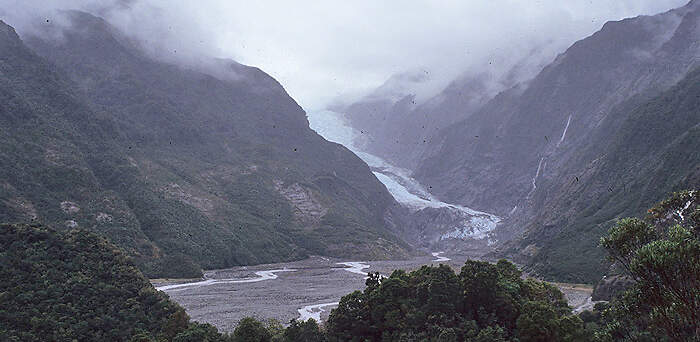
Südalpen, Westland-Nationalpark, Neuseeland © Peter Dollinger, Zoo Office BernEinige Nationalparks:
Neuguinea / Indonesien: Lorentz-Nationalpark
Neuseeland: Arthurs-Pass-Nationalpark, Fjordland Nationalpark, Mount Aspiring-Nationalpark, Mount Cook-Nationalpark, Mount Egmont-Nationalpark, Te Urewera-NationalparkT, ongariro-Nationalpark, Westland-Nationalpark

Literatur und Internetquellen
- FUGGER, B. & BITTMANN, W. (2000)
- GÜNTHER, J. & MOHR, J. (2011)
- KEAST, A. (1967)
- LAMPING, H. et al. (2004)
- REINER, E. & LÖFFLER, E. (Hrsg. 1977)
Zurück zu Übersicht Lebensräume in Australasien
Weiter zu Gewässer und Feuchtgebiete
Feuchtwälder der gemäßigten Zone
|
|
Allgemeines Die Regenwälder der gemäßigten Zone Australiens sind im Wesentlichen auf Tasmanien und die feuchten Gebirgsgegenden Südostaustraliens beschränkt, wo sie mit subtropischen Regenwäldern, feuchten und trockenen Hartlaubwäldern sowie Heidevegetation ein Mosaik bilden. In oberen Berglagen erstrecken sie sich Richtung Norden bis zur Grenze zu Queensland. Sie sind relativ einheitlich, und weisen insbesondere an kühleren Standorten jeweils nur zwei bis drei dominierenden Baumarten auf. Sie haben einen dichten Unterwuchs von Farnen und Moosen. Wo der Jahresniederschlag tiefer ist, aber immer noch mehr als 1000 mm beträgt, gedeihen feuchte Hartlaubwälder. Vegetation und CharakterpflanzenDie Bäume der kühl-temperierten Regenwälder in Südostaustralien und Tasmanien werden 5-30 m hoch und haben keine Brettwurzeln. Es handelt sich um Koniferen, wie Tasmanische Zeder (Athrotaxis), Wollemie (Wollemia nobilis), Diselma oder Steineiben (Lagarostrobos franklinii, Phyllocladus aspleniifolius) Laubbäume, wie Scheinulmen (Eucryphia), Loorbergewächse (Atherosperma, Doryphora) oder überwiegend immergüne Südbuchen (Nothofagus). In Höhenlagen von 550-1'500 m ist häufig die bis 30 m hohe Antarktische Scheinbuche (Nothofagus antarctica) bestandesbildend. Typische ZootiereKurzschnabeligel, Tüpfelbeutelmarder, Koala, Nacktnasenwombat, Zwerggleitbeutler, Kurzkopfgleitbeutler, Kaninchenkänguru, Bennettwallaby, Östliches Graues Riesenkänguru, Sumpfwallaby. Nördlicher Streifenkiwi, Buschhuhn (Alectura lathami), Glanzkäfertaube, Wongataube, Langschwanz-Fruchttaube, Prachtfruchttaube, Helmkakadu, Gelbohr-Rabenkakadu, Gelbhaubenkakadu, Allfarblori, Lachender Hans. |
![]()
Nationalparks und andere Schutzgebiete
Einige Nationalparks: Queensland: Bunya Mountains-Nationalpark, Cape Hillsborough-Nationalpark, Deepwater-Nationalpark, Eungella-Nationalpark, Great Sandy-Nationalpark, Lamington-Nationalpark

Literatur und Internetquellen
- DAWSON, J. & LUCAS, R. (2000)
- FUGGER, B. & BITTMANN, W. (2000)
- GÜNTHER, J. & MOHR, J. (2011)
- KEAST, A. (1967)
- REINER, E. & LÖFFLER, E. (Hrsg. 1977)
Zurück zu Übersicht Lebensräume in Australasien

